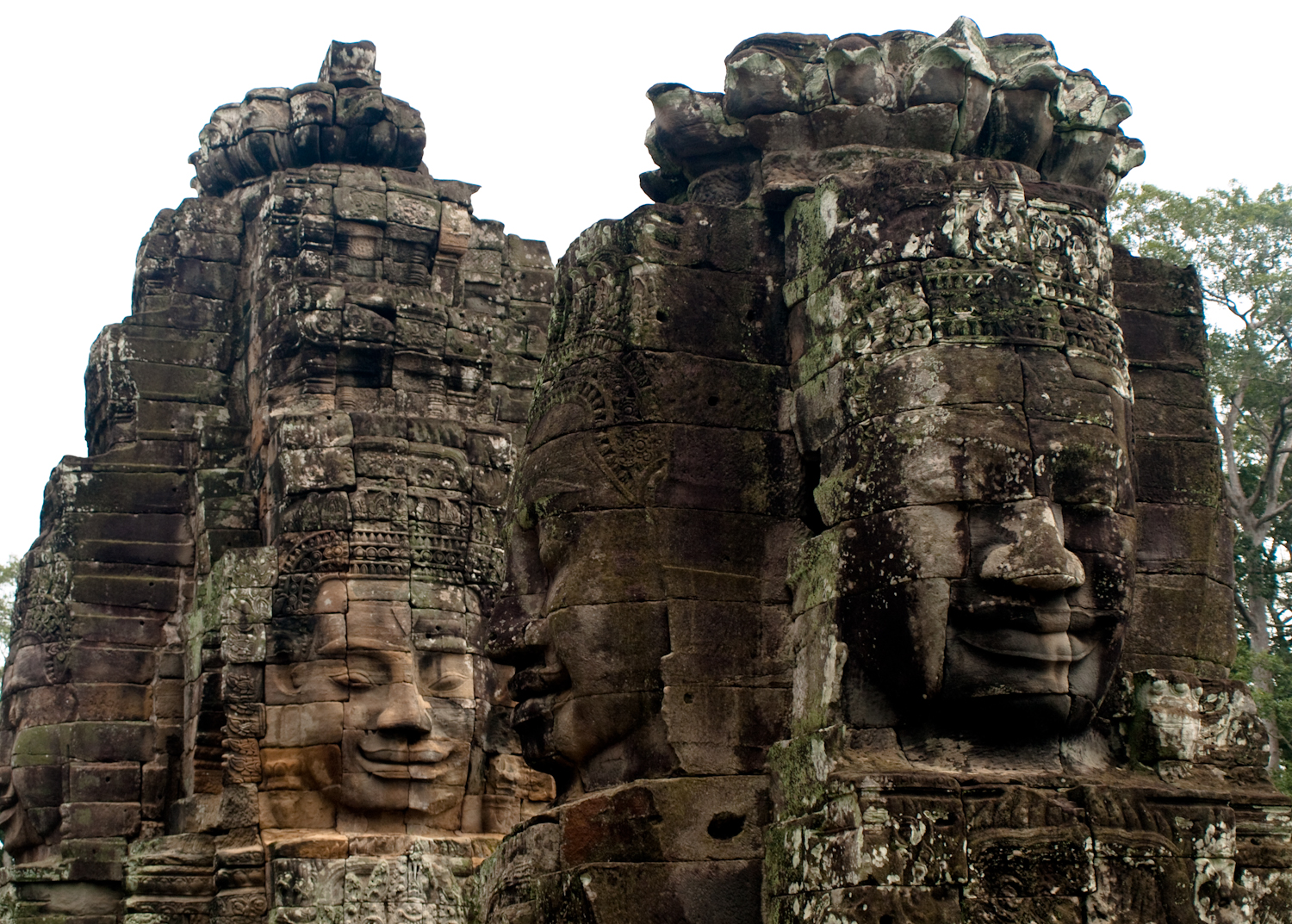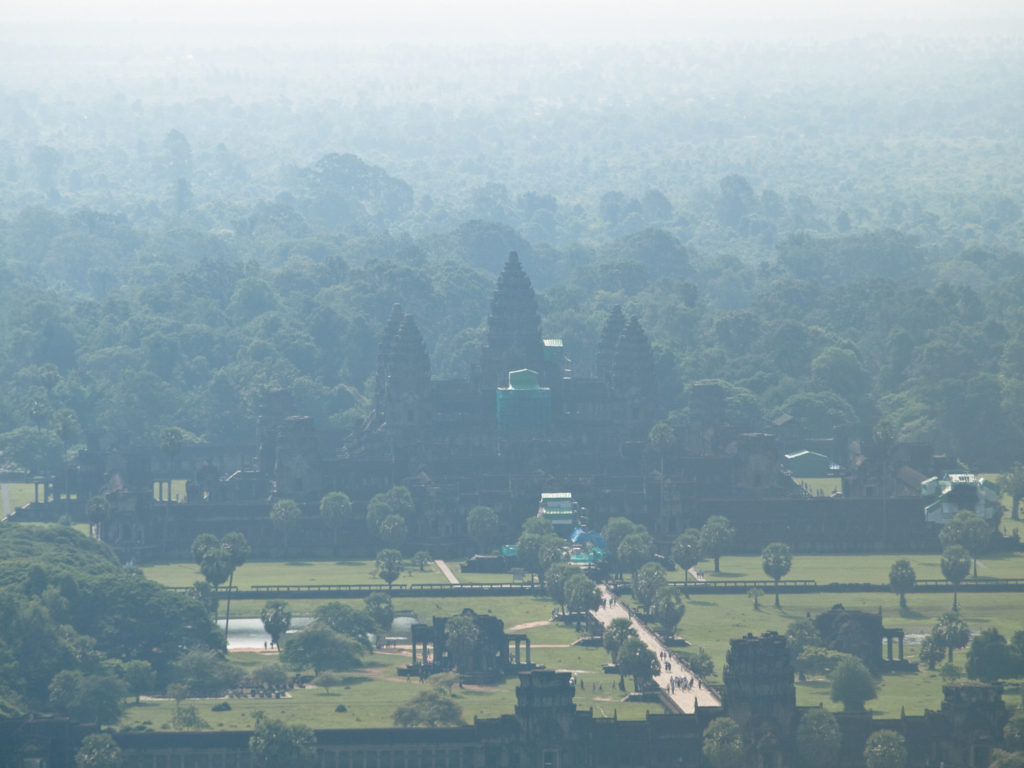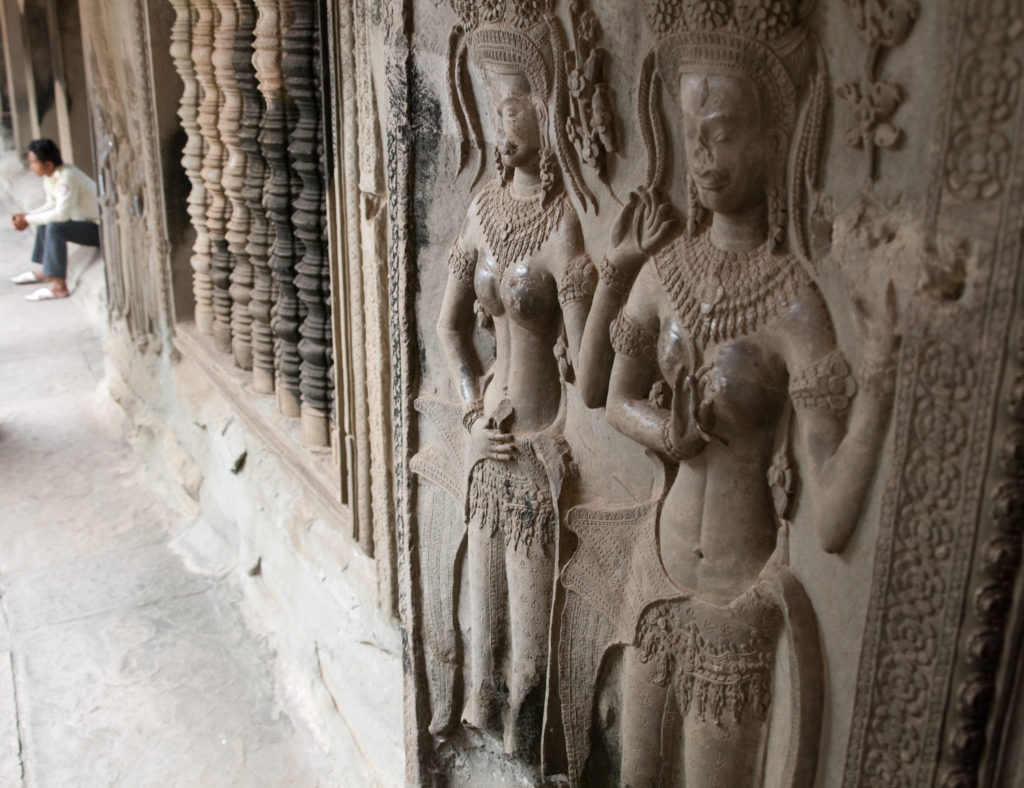An Ancient Kingdom

The grandeur of the mighty Khmer civilization is visible in its stunning, intricate temples –palaces of the Gods and homes to the faithful. Cambodia is one of the most beautiful countries I have visited. The people are gentle, the markets are thriving, and the architecture is breathtaking. At the same time, the ravages of the civil war are still very visible. Cambodia is a land that spoke to my soul.
At the end of a flight to Siem Reap, the Gateway to the ancient temple complex of Angkor, I’m roused out of a peaceful slumber. Peeping outside the window I see a swathe of tropical green foliage and yonder the glittering Tonlé Sap Lake, and amidst this all, ancient sanctuary towers yearning towards the sky. I’m on a journey of discovery of the world’s greatest religious complex created by man, the Angkor Wat; an edifice that’s withstood the vagaries of nature and a crippling civil war, and now, its indomitable spirit threatened by global warming.

Boating on the Tonlé Sap Lake
The grandeur of the mighty Khmer civilization is visible in its stunning, intricate temples –palaces of the Gods and homes to the faithful. Cambodia is one of the most beautiful countries I have visited. The people are gentle, the markets are thriving, and the architecture is breathtaking. At the same time, the ravages of the civil war are still very visible. Cambodia is a land that spoke to my soul.
At the end of a flight to Siem Reap, the Gateway to the ancient temple complex of Angkor, I’m roused out of a peaceful slumber. Peeping outside the window I see a swathe of tropical green foliage and yonder the glittering Tonlé Sap Lake, and amidst this all, ancient sanctuary towers yearning towards the sky. I’m on a journey of discovery of the world’s greatest religious complex created by man, the Angkor Wat; an edifice that’s withstood the vagaries of nature and a crippling civil war, and now, its indomitable spirit threatened by global warming.
Centuries ago, traders and missionaries from India took the long road to Cambodia, and brought in their wake gods and faith, both embraced by the locals, says Bros our guide, as we wound through bustling roads on a quaint tuk-tuk, snaking through the heart of this colorful city. The locals ascribed to the tenet of divine protection, and temples dedicated to the Hindu Pantheon and Buddhism were built by subsequent Kings to protect the land and in its people. Destined for the immortals, these multiple shrines were carved out of brick, laterite, and sandstone mined from the Kulen Mountains. Inscriptions, carved on the entrances, worded in Sanskrit or ancient Khmer unlocked the doors to the secrets of ancient Khmer, but only approximately 1200 wordings remain, the rest obliterated by time and nature.

An aerial view of Angkor Wat
Early next day we ascended the pale morning skies, like a plume of grey incense smoke, on a hot air balloon. The world’s largest religious monument emerged from fronds of mist, the glorious Angkor Wat silhouetted against the first rays of the sun. Spread over nearly 200 hectares of land, this West facing temple, dedicated to Lord Vishnu, is akin to the microcosm of the Hindu Universe. The structure, like the other temples of the region, resonates with mythical representations: the sanctuary represents the mighty Mount Meru; the various enclosures represent surrounding mountains; and the placid moats surrounding the temples are replicas of the vast oceans.
I wandered over its causeway, built over the moat, adorned with balustrades of serpents – the nagas, lights and shadows dancing over the water. Built by Suryavarman II in the 12th century, the splendor of this intricate multiplex of shrines was palpable. Each nook and crevice revealed the secrets of the immortals. The exquisite bas reliefs, the most significant of which drew from the great Indian epics, The Ramayana and Mahabharata, were lush with details. One could linger over its exquisite minutia till time stood still: The battle of Kurukshetra; the life of Lord Krishna; a 20-armed Ravana shaking Mount Kailasa; and the breathtaking Churning of the Sea, carved out on a colossal 49 meter panel, a vivid description of gods and demons. Climbing atop the apex of the pyramid, glimpsing the sprawl of green below, I soaked in the scale and harmony of Angkor Wat.

Detailed carvings in Angkor Wat
Leaving the colossal Angkor Wat, we drove to the stunning Bayon Temple lying in the ancient city of Angkor Thom. Bayon, a breathtaking complex of face towers, was built by Jayavarman VII, and used as a state temple. Its journey through multiple religious phases is evident in the serene stone faces that stand sentinel over the temple. Bros points out the complexities of the transformation, Buddha cautiously modified to depict Hindu gods, as, in one instance, Lord Shiva, evident by his benevolent third eye. Another striking feature of this complex were the beautiful Apsaras, found throughout temples of the region, grasping in their graceful hands flower buds and flowers, signifying the cycle of life.

Entwined with the earth
But the most alluring of the shrines is Ta Prohm, overrun by sinewy trees, in a state of perennial decay. It’s a living image of Angkor as it was in the 19th century. The strangler fig and the silk cotton tree coil around the temple like a serpent devouring it, branches soaring like canopies far into the heavens. Also built by Jayavarman VII in the late 12th and 13th centuries, Ta Prohm’s principal deity, Prajnaparamita was carved in the likeness of the king’s mother. Wandering through its labyrinthical interiors, I stepped over mildewed masonry, the sound of crickets humming in my ears, watching the slow flow of sap from ancient trees. Ta Prohm, lost in a mythical forest untouched by humans, has an otherworldly feel to it, as all Cambodia’s glorious temples have, miracles built by humans rivalling the beauty and splendor possible only in nature.
A version of this article appeared in the HDFC Bank’s Imperia magazine





